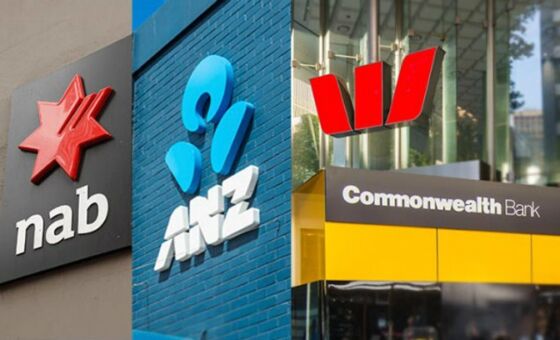SMSF term deposit rates
The table below shows the best Self Managed Super Fund (SMSF) term deposit rates from our online partners, sorted by highest rates per annum (p.a.) for five-seven month terms.

-
Interest paid end of term
-
For deposit amounts $10,000 - $1,000,000
-
Interest paid end of term
-
For deposit amounts $1,000 - $250,000
-
Interest paid end of term
-
For deposit amounts over $1,000
-
Interest paid end of term
-
For deposit amounts $1,000 - $250,000
-
Interest paid end of term
-
For deposit amounts $1,000 - $2,000,000
-
Interest paid monthly
-
For deposit amounts $1,000 - $2,000,000
-
Interest paid end of term
-
For deposit amounts $5,000 - $49,999
-
Interest paid end of term
-
For deposit amounts $10,000 - $1,000,000
Showing 6 of 206 results
To see more results adjust the filters above
Unsure of a term in the above table? View glossary
The initial results in the table above are sorted by Highest rate p.a. between 5 & 7 mths (High-Low) , then Highest rate p.a. between 8 & 13 mths (High-Low) , then Provider Name (Alphabetical) . Additional filters may have been applied, which impact the results displayed in the table - filters can be applied or removed at any time.
About SMSF term deposit rates
As part of your Self-Managed Super Fund (SMSF) investment strategy you may consider taking out a term deposit. So what is an SMSF term deposit and how do they work?
What is an SMSF term deposit?
An SMSF term deposit functions in much the same way as a regular term deposit. You invest a certain amount of money, which is then locked in at a fixed interest rate (expressed as a per annum (p.a.) %) and duration (often referred to as the ‘term’). It then delivers interest to you, which is paid either monthly, quarterly or when the term deposit reaches ‘maturity’ (at the end of the term). You are generally unable to withdraw the money until the term deposit reaches maturity, otherwise you may face penalty fees and/or your interest rate may be lowered as a result. SMSF term deposits differ from regular term deposits, however, as they are specifically designed for members of self-managed super funds, not everyday consumers. The money invested would also come from and return to your SMSF account.
Terms can range from as little as one month to up to five years. At the end of the term, you can choose to withdraw the money with the earned interest or reinvest or ‘rollover’ your money into a new term deposit. It’s important to note that you may not be offered the same interest rate on your new term deposit as you had with your previous one.
How to apply for an SMSF term deposit
To apply for a SMSF term deposit, you’ll need to be a member of an eligible SMSF. This means the individuals in your SMSF are considered fund trustees, or a company is designated as the trustee with each fund member being a director of said company. Some SMSF term deposits impose restrictions on the number of trustees/directors you can have as part of the SMSF in order to be eligible, which can be important to check before applying. You can generally apply for an SMSF term deposit online, over the phone or at the financial institution’s branch (if they have one).
With all investments, you should carefully read the terms and conditions, Product Disclosure Statement (PDS) and Target Market Determination (TMD) as well as any other relevant documentation for any products you’re considering before making a decision. It can also be wise to seek professional financial advice.
Pros and cons of SMSF term deposits
While a term deposit is considered a low-risk investment that guarantees a return, they do come with potential advantages and disadvantages. Below are some factors to consider when weighing up if an SMSF term deposit is right for you.
Potential advantages
- Secure investment: Term deposits are considered a safer investment when compared to other alternative investment strategies such as share trading. Your term deposit (up to a total of $250,000 of all funds kept with an authorised deposit-taking institution (ADI)) is also protected under the Financial Claims Scheme, as long as it’s opened with an ADI in Australia.
- Guaranteed return: As long as you do not withdraw your money early, you are guaranteed to earn interest and receive a return on your term deposit.
Potential disadvantages
- Lack of flexibility: Term deposits typically have early withdrawal penalties which can be a fee, a reduction in the interest rate, or a combination of both. You generally also have to provide the financial institution with a 31 day notice that you want to move your funds back into your SMSF. These steps make it harder for you to use your deposit money during the term, particularly if you wish to invest it elsewhere or use it as part of a superannuation income stream (if you have reached your preservation age and retired).
- Economic Changes: Since your term deposit rate is locked at the interest rate agreed at the beginning of the term, it will not be affected by any economic changes (such as the raising or lowering of the cash rate) during the term period. This can be good or bad, depending on where interest rates go. For example, if interest rates go up, your term deposit rate will not increase and may be lower than the term deposit rates on offer at that time.
- Inflation: If you decide on a longer term deposit, such as a five year term, high inflation rates could potentially erode the value of the term deposit and its earnings over time. This means the money withdrawn at the end of your term may not be worth as much as when you deposited it.
How do I compare SMSF term deposits?
Comparing SMSF term deposits can be beneficial when looking for the right option for your needs. You can use the filters in the comparison table above to help narrow down your options. Canstar’s Term Deposit Awards may also be a useful reference, as the Awards take into account both the interest rate and features on offer from financial institutions.
Some of the factors to consider when comparing SMSF term deposits include:
- The interest rates on offer for different terms
- What the ideal term is for your term deposit (terms are usually between one month and five years)
- If there are any eligibility requirements (e.g. a maximum number of trustees/directors for the SMSF)
- How easy it is to open up a term deposit (online application is generally available)
- Whether there are minimum or maximum investment amounts
- Whether there are any set-up or account fees
- Whether you can make early withdrawals and what notice period and penalties may apply
- What happens to the account at maturity (e.g. automatic rollover to a new term or maturity alerts) and whether there are any costs associated when the term ends.
How to find the best SMSF term deposit rates
When searching for the best SMSF term deposit rates, you may be tempted to look towards the big four banks such as ANZ, CommBank, NAB or Westpac. But when it comes to term deposits, smaller providers tend to offer many of the same benefits as the big four, and often with higher rates.
It can be tedious to individually go to each provider’s site to compare rates, which is why Canstar’s term deposit comparison table is an easy way to view and compare interest rates from different providers across Australia on our database. This can be viewed above, on the Canstar website or via the Canstar app. Our comparison table also displays the best term deposit rates for different term periods for each provider. This is because not all providers follow the rule that longer term periods mean higher interest rates. You can also use Canstar’s term deposit calculator to get an idea of how much interest you can expect to make on your term deposit, based on the amount you invest, the term length, and the interest rate.
Frequently Asked Questions about SMSF term deposits
Latest in term deposits
Canstar Term Deposits Awards
Looking for an award-winning product or to switch providers or brands? Canstar rates products based on price and features in our Star Ratings and Awards. Our expert Research team shares insights about which products offer 5-Star value and which providers offer outstanding value overall. We also reveal which providers have the most satisfied customers in our dedicated Customer Satisfaction Awards.
About the authors
Nick Whiting, Insurances Writer

Joshua Sale, GM, Research

As Canstar’s Group Manager, Research, Ratings & Product Data, Josh Sale is responsible for the methodology and delivery of Canstar’s Term Deposit Awards. With tertiary qualifications in economics and finance, Josh has worked behind the scenes for the last five years to develop Star Ratings and Awards that help connect consumers with the right term deposit for them.
Josh is passionate about helping consumers get hands-on with their finances. Josh has been interviewed on a wide range of personal finance topics by media outlets such as the Australian Financial Review, news.com.au and Money Magazine.
You can follow Josh on LinkedIn, and Canstar on X and Facebook.
Important information
For those that love the detail
This advice is general and has not taken into account your objectives, financial situation or needs. Consider whether this advice is right for you.










